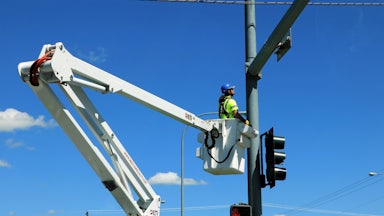Thanks to a combination of boosted economic activity and higher temperatures, the Energy Information Agency, or EIA, projects that domestic power consumption is set to reach record highs this year. For utilities and gas drillers—many of them attempting to brandish environmental credentials—this is great news. Rising demand tends to mean rising profits. For the planet, however, this isn’t great—even if renewables start to make up a larger share of power generation.
Thanks in part to the pressure around devastatingly high heating prices this winter, the White House has started talking more about ways to increase energy efficiency. As winter approaches, the administration has highlighted not just programs like the Low Income Heating Assistance Program—which disperses funding to states to offset heating costs—but also modest new investments in weatherization, building retrofits, and electric heat pumps furnished by the Inflation Reduction Act and Bipartisan Infrastructure Law. “These steps will not only help cut home energy costs ahead of the winter months, but will also help households afford energy efficient equipment when they need to make home repairs and save on their bills in the future,” a press release last month stated.
But this is all pretty small-bore stuff. New incentives are meant to install some 500,000 heat pumps in a country where there are more than 140 million units of housing.
This is part of a bigger challenge in decarbonization. Activities like heating and transportation—now run mostly on fossil fuels—will need to come onto a grid that is increasingly powered by renewable and zero-carbon energy. Thanks to a combination of ideology and political expediency, that challenge—even when it comes to energy efficiency—has been posed chiefly as one of addition: more transmission lines, more heat pumps, and more electric vehicles. All that’s true, of course. Lots of stuff will need to be built and installed to run a decarbonized grid.
But more is only one side of the equation. Continuing to pile the material and energetic demands of exponential economic growth-as-usual onto the grid makes the green transition harder. More things, that is, will need to be made to run on green power that still fuels a relatively small percentage of what already runs on electricity. And it doesn’t only come from the sun: E.V.s and energy storage require minerals like lithium that are still extracted and processed in a limited number of places. Suggesting that people make do with less, meanwhile, conjures up images of Jimmy Carter wearing a sweater and telling Americans to turn down their thermostats, or even some ugly Malthusian obsession with population control.
But what if consuming less energy could be pleasurable? “Less” could be popular with voters, for example, if it’s less of things people tend not to like: namely, work. The EIA’s report projected commercial energy sales rising to a record 1,376 billion kilowatt hours as people return to the office this year. What if some of that could be reduced—not just by continuing remote work where feasible but with more imaginative reforms even for those who need to work in person? Calls for a four-day week—which have long floated in the ether of progressive policymaking—got a new jolt of energy as a result of the pandemic, when working from home became the norm. And now evidence is accumulating that adopting this shorter working week could be a lot more practical than employers used to think.
There are quality of life benefits to working less, of course: Who doesn’t like a three-day weekend? But there are benefits for the planet too. A 2011 study found that a 10 percent reduction in working hours could reduce emissions by 4.2 percent. As part of its four-day workweek pilot, the state of Utah found that shutting down government buildings on Fridays could save 6,000 metric tons of carbon dioxide per year. A more recent survey in the U.K. found that a decrease in commuting caused by a four-day workweek would result in 691 million fewer miles traveled per week. The planetary dividends of less working time aren’t only in less commuting and energy spent powering giant office buildings. Free time could also unlock less energy-intensive consumption, enabling people to seek out endorphins in more time-intensive, less energy-intensive pursuits like rec soccer leagues instead of ordering new gadgets on Amazon. Those looking forward to a long weekend might opt to pick up groceries and cook up a new recipe rather than ordering a plastic-ensconced meal from DoorDash.
A new study has shed some light on just how popular working less can be—not just with employees but with their employers as well. Not one of the 33 companies that participated in a six-month four-day-week pilot program is likely to return to a five-day-week schedule. Ninety-seven percent of the more than 900 employees who participated said they didn’t want to go back. The pilot—conducted by the nonprofit 4-Day Work Week and researchers at Boston College, University College Dublin, and Cambridge University—involved no pay cuts, with employees working four eight-hour days. Participating companies included a range of industries that skewed toward white-collar office jobs, mostly in the U.S. and Ireland. Participating employers ranked the program nine out of 10, reporting lower employee health care costs and less turnover. Rather than looking for new work, employees allocated most of their extra time to leisure (4.9 hours on average), followed by housework and care work (3.5 hours) and personal maintenance (2.6 hours), and reported less fatigue and fewer problems sleeping. While environmental data collected in the study was limited, participants reported less commuting by car, and time commuting dropped by roughly an hour each week.
Boston College sociologist Juliet Schor, lead researcher on the trial whose work explores the nexus of climate change, consumption, and working hours, said the study would have been “a difficult sell pre-Covid—it would’ve struck a lot of people as pie-in-the-sky, and not feasible for companies. But the pandemic created such levels of stress and burnout, and led many employees to say, ‘I want to live my life differently,’ and this created more of a space for reimagining work.” Results from the world’s biggest-ever four-day-week pilot, involving 3,300 people and 700 companies, are due to be released in February.
Less, in a sense, can also be more: more time for spending with loved ones, cultivating weird new hobbies, and—as the old labor movement slogan goes—for what we will. Shorter workweeks aren’t a silver bullet for reducing emissions but might offer a way into talking about a reduction in energy demand that’s a little more fun.










